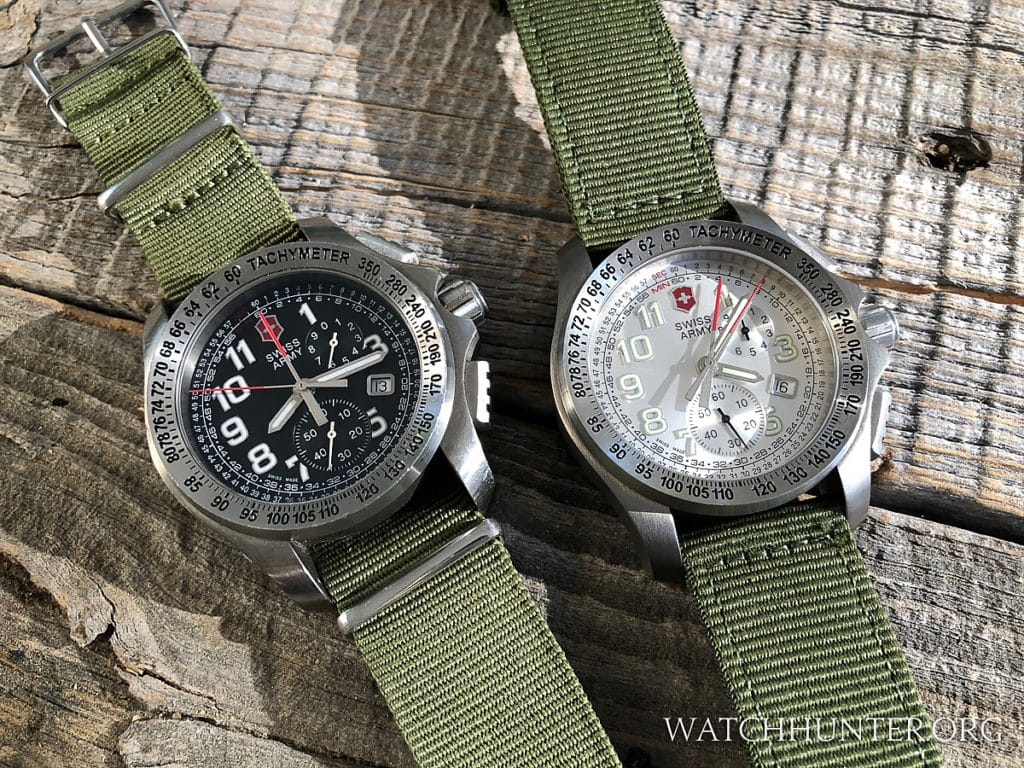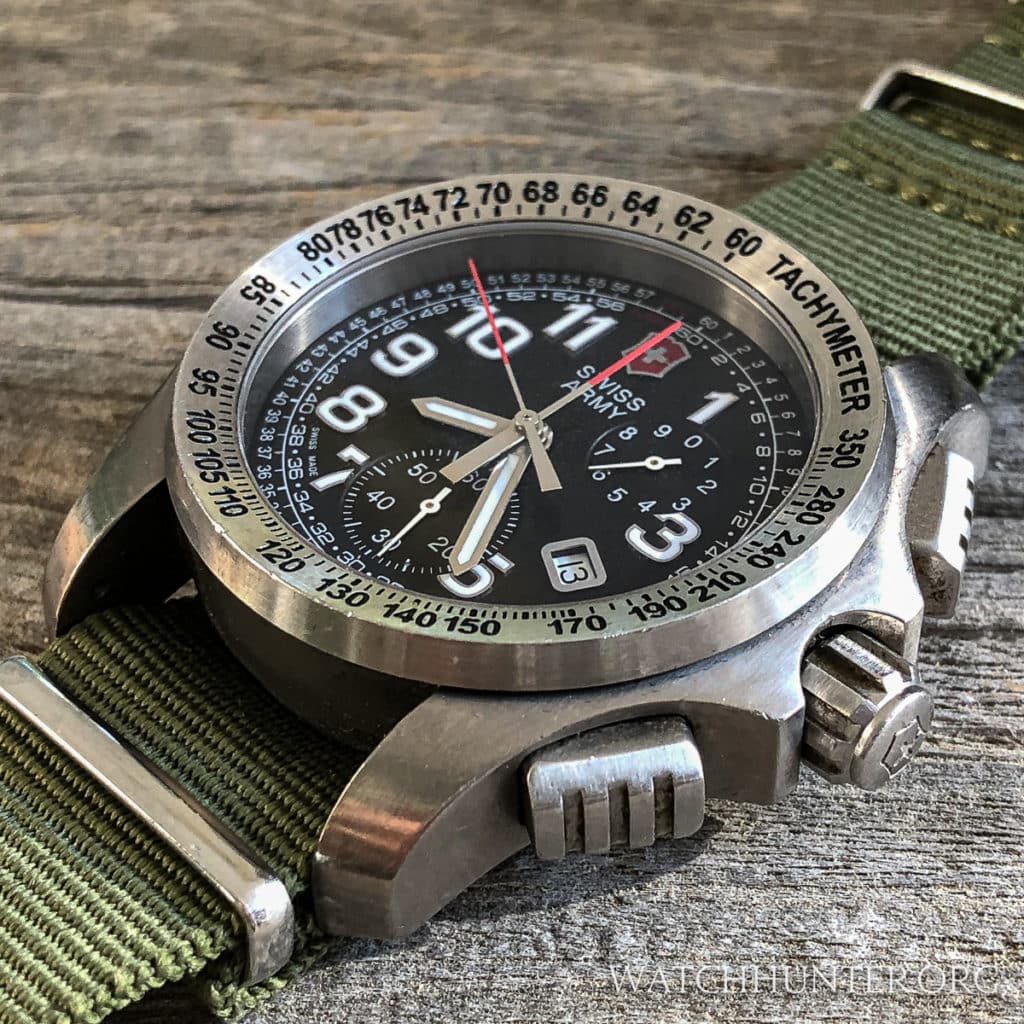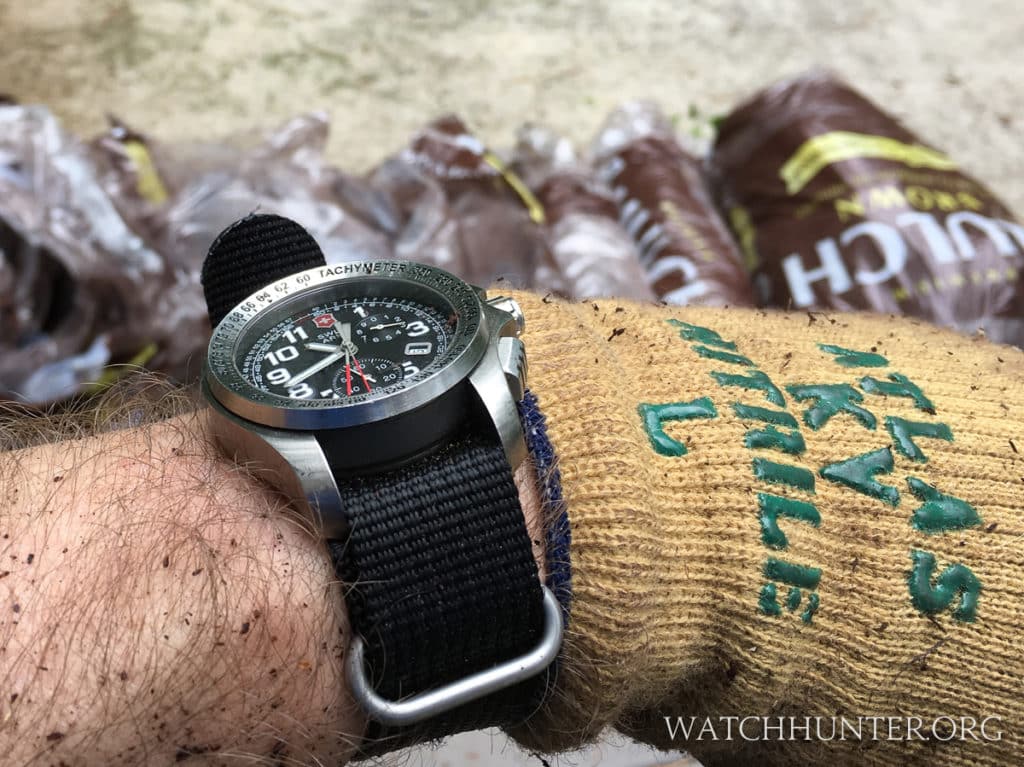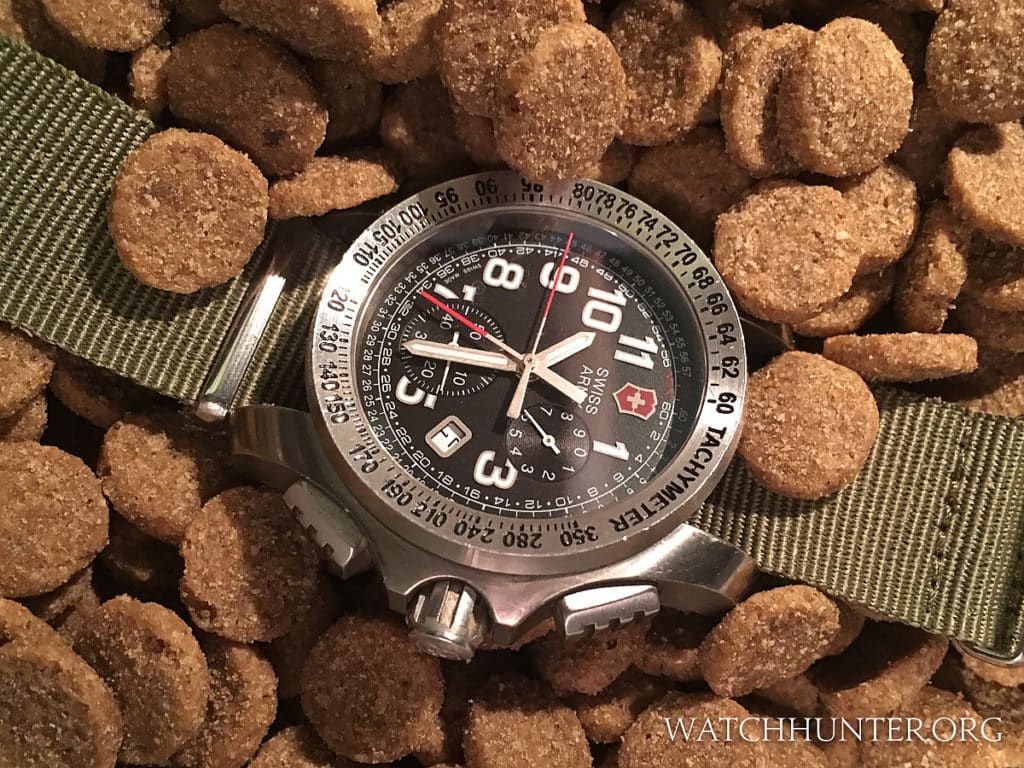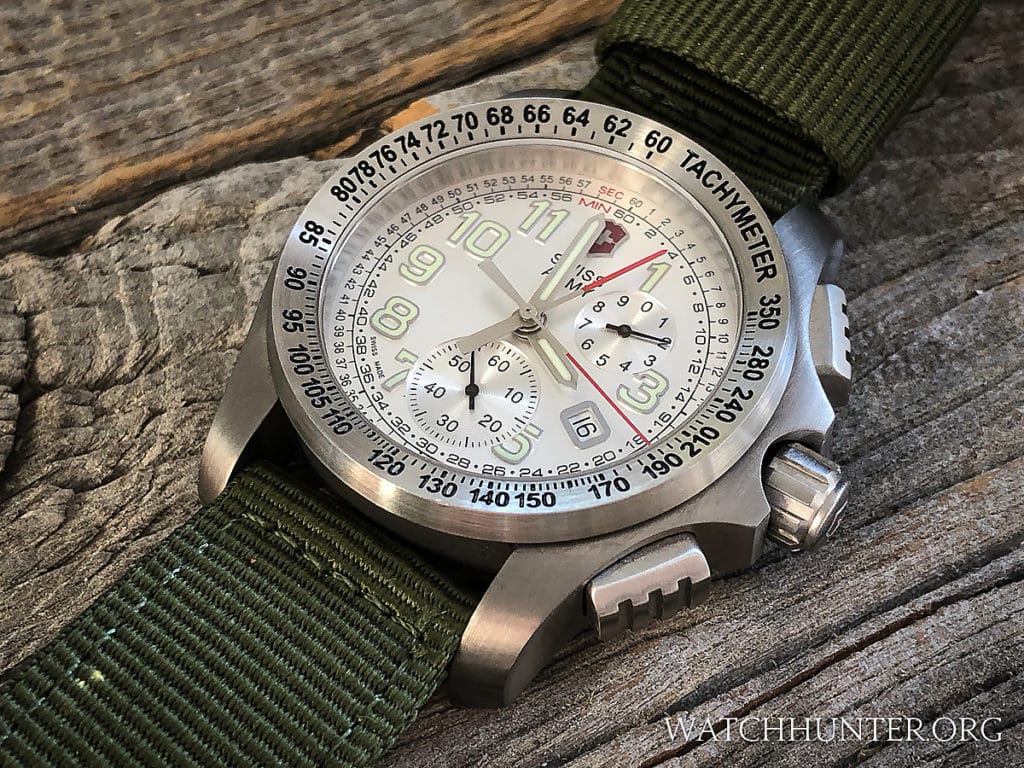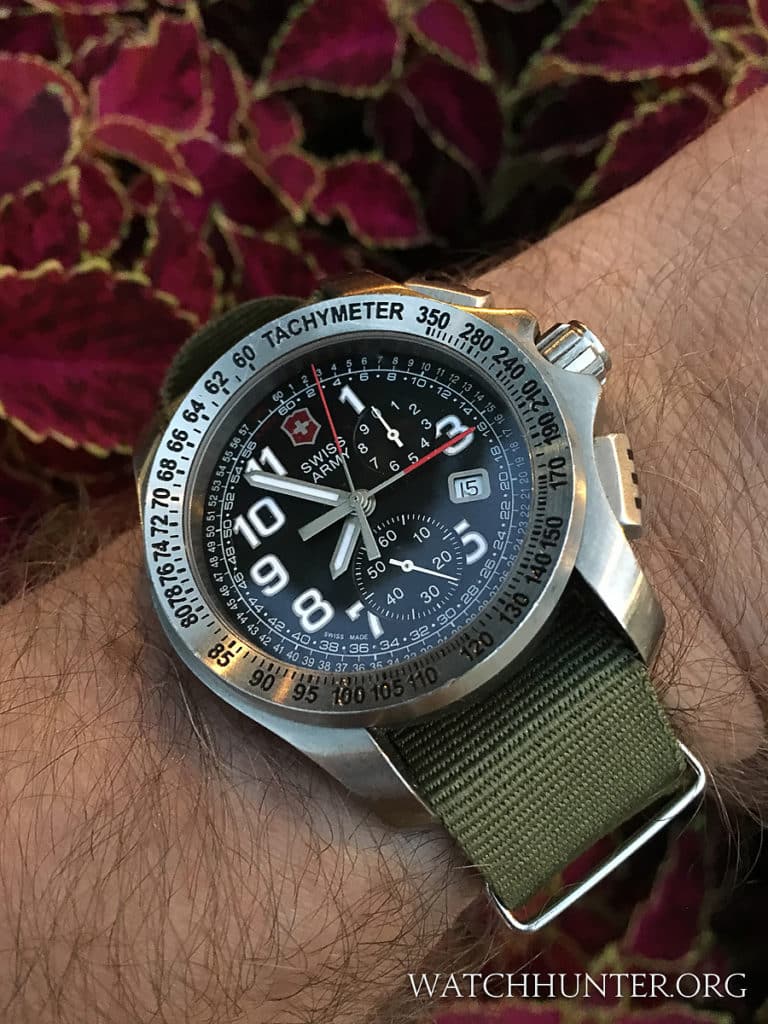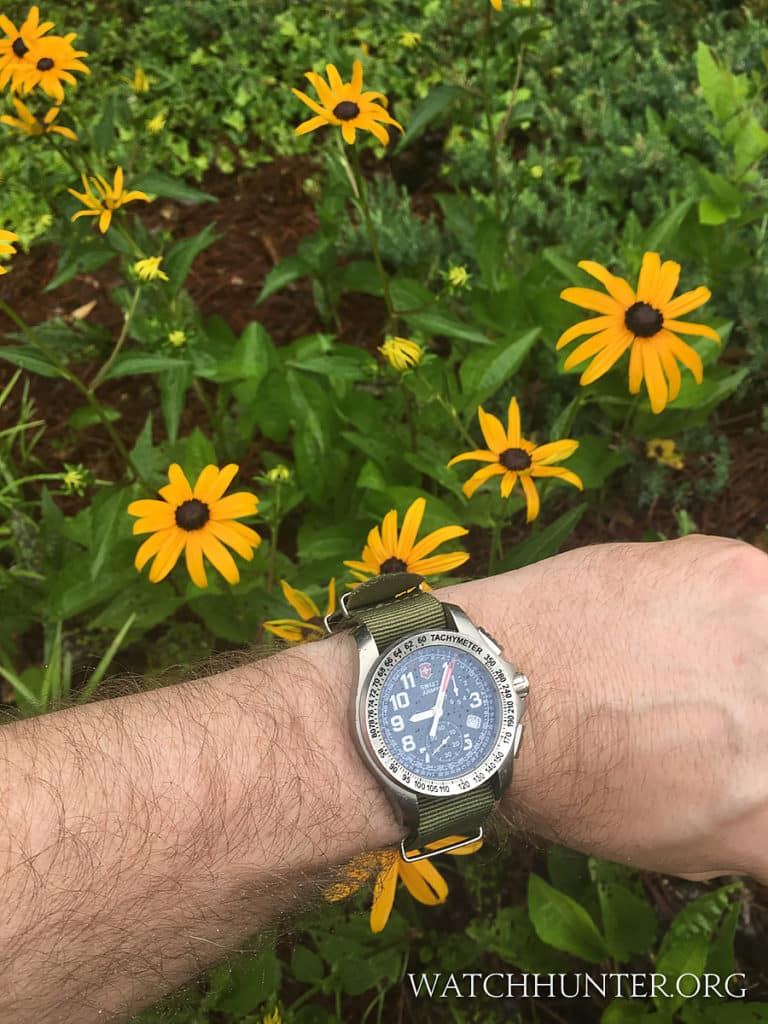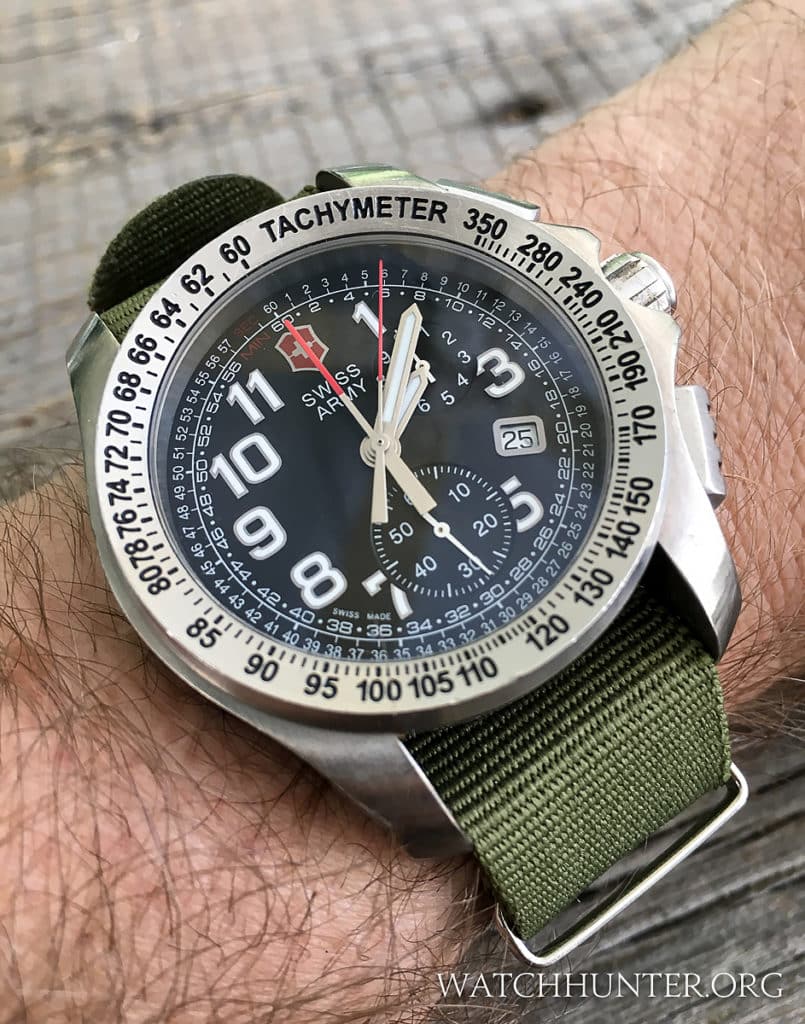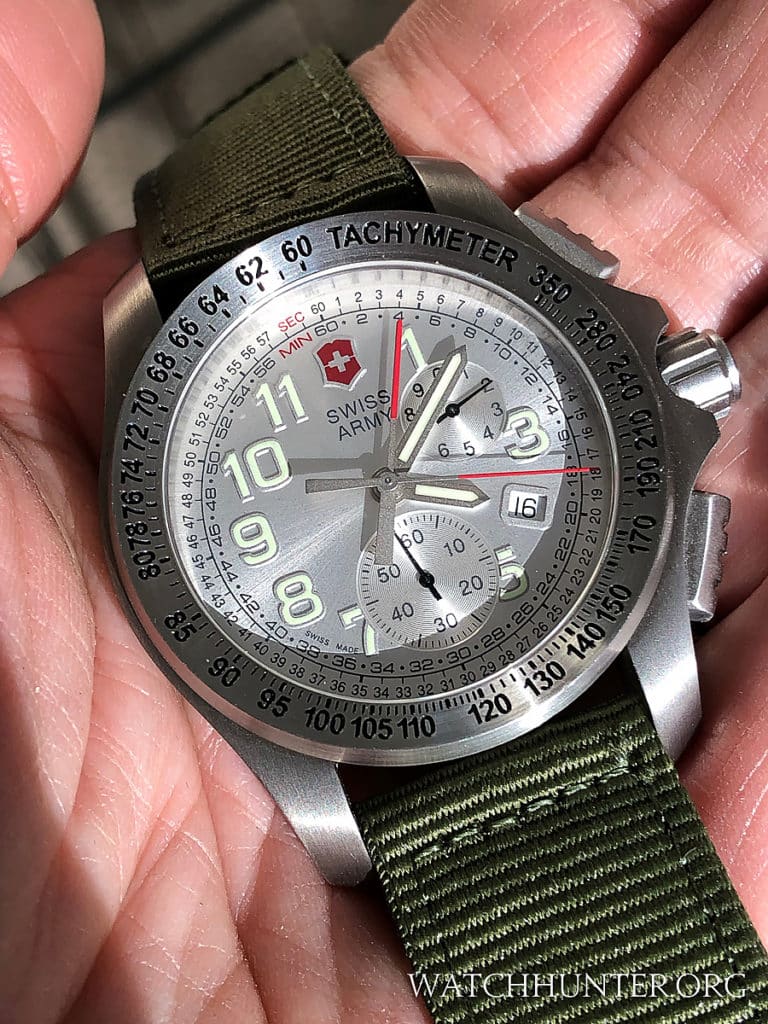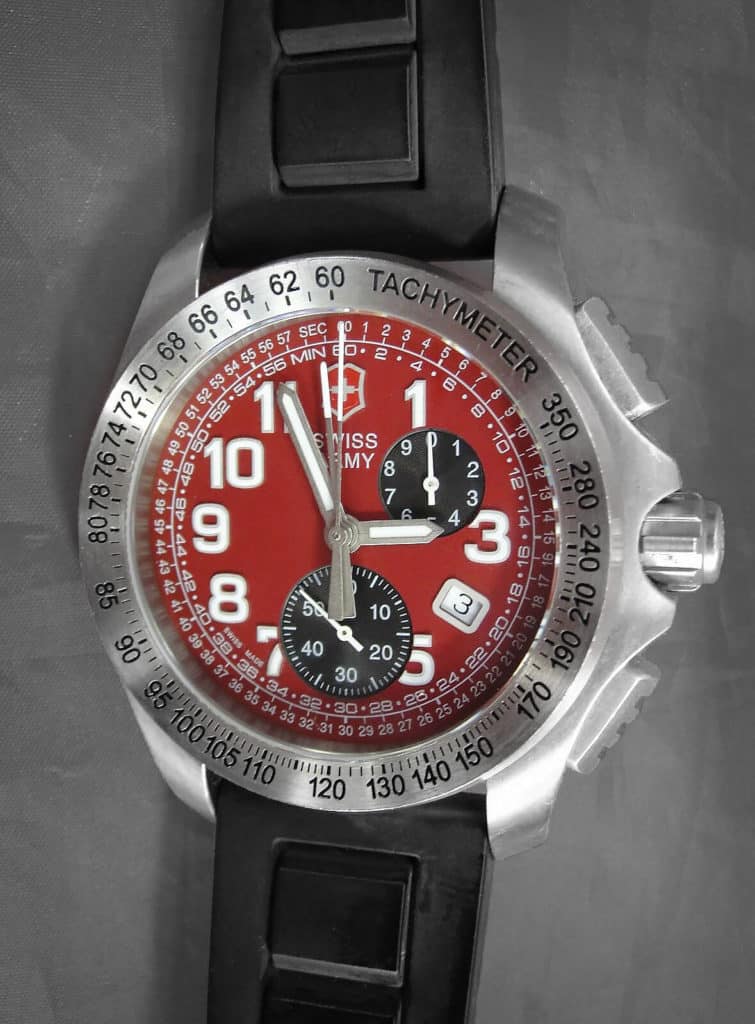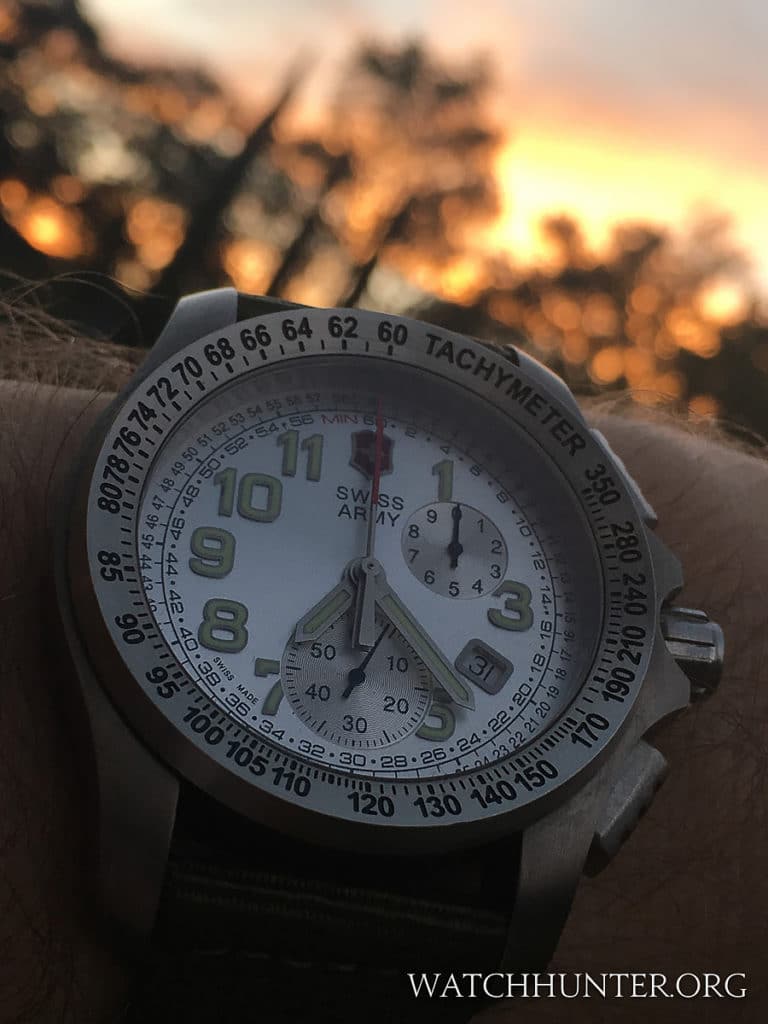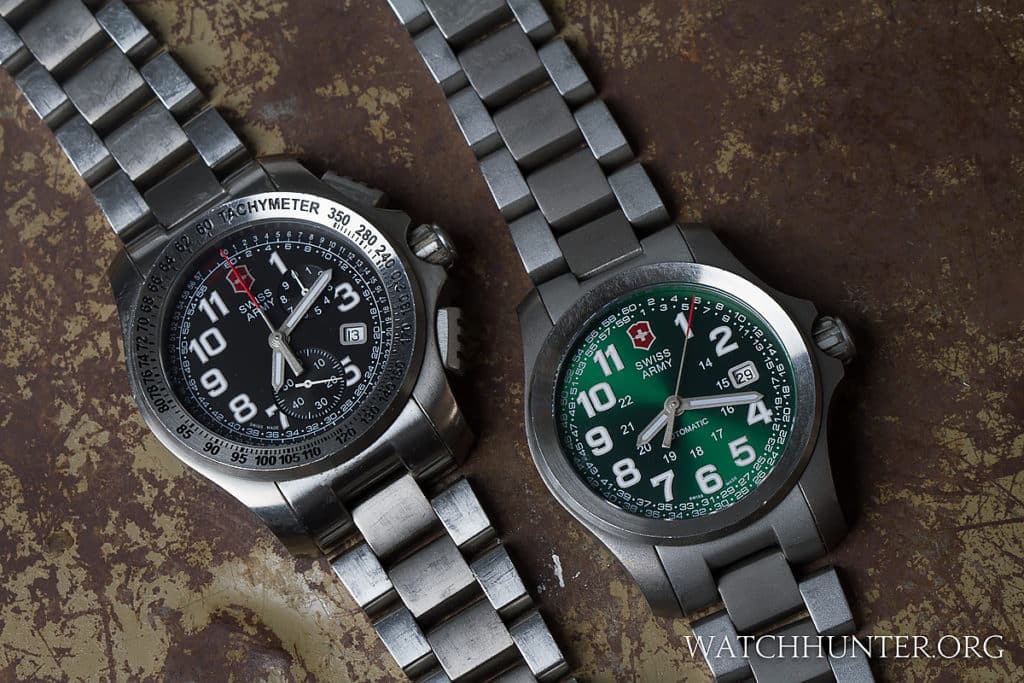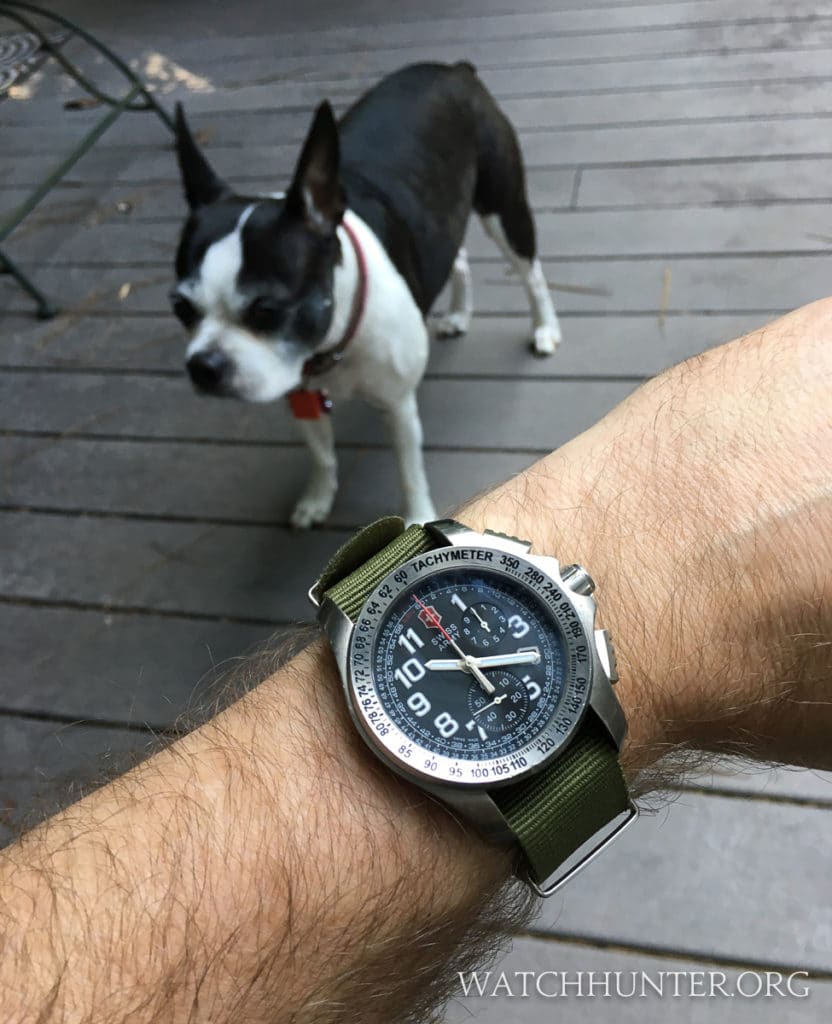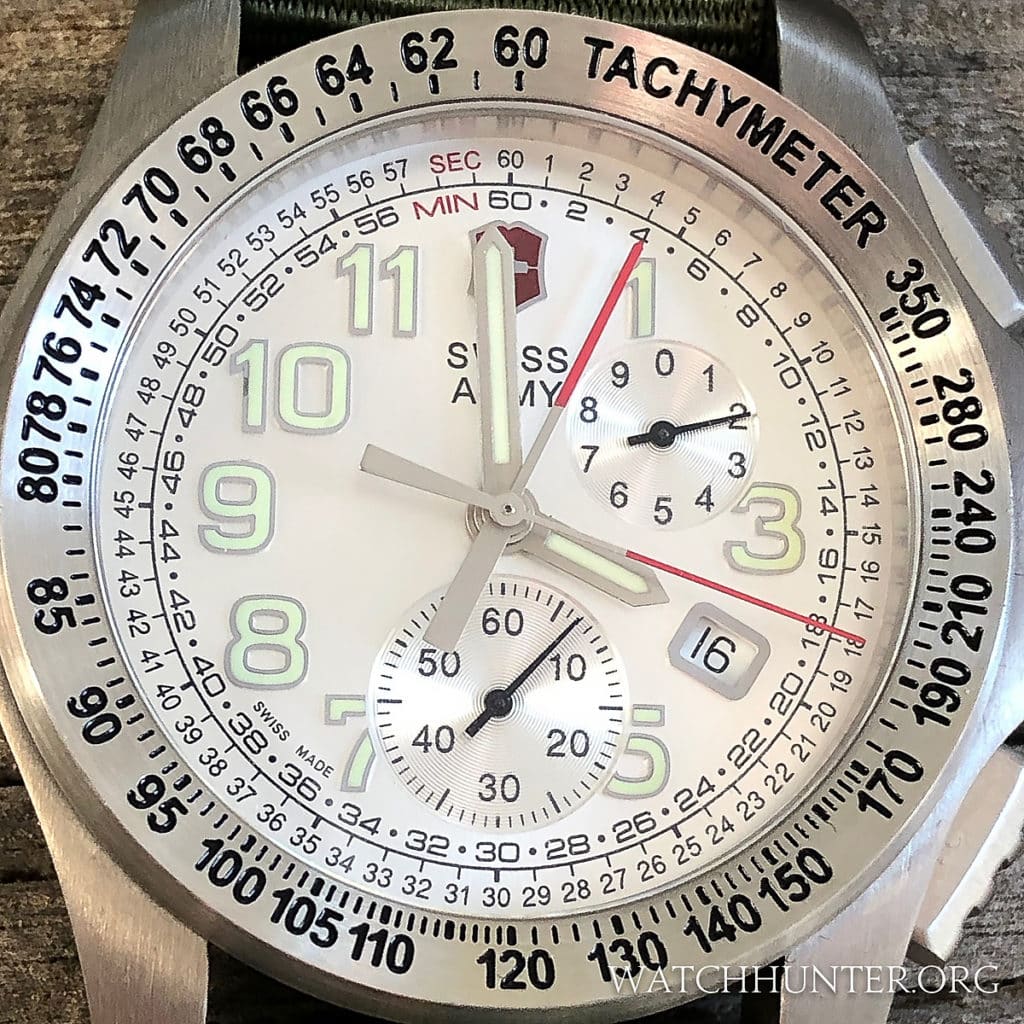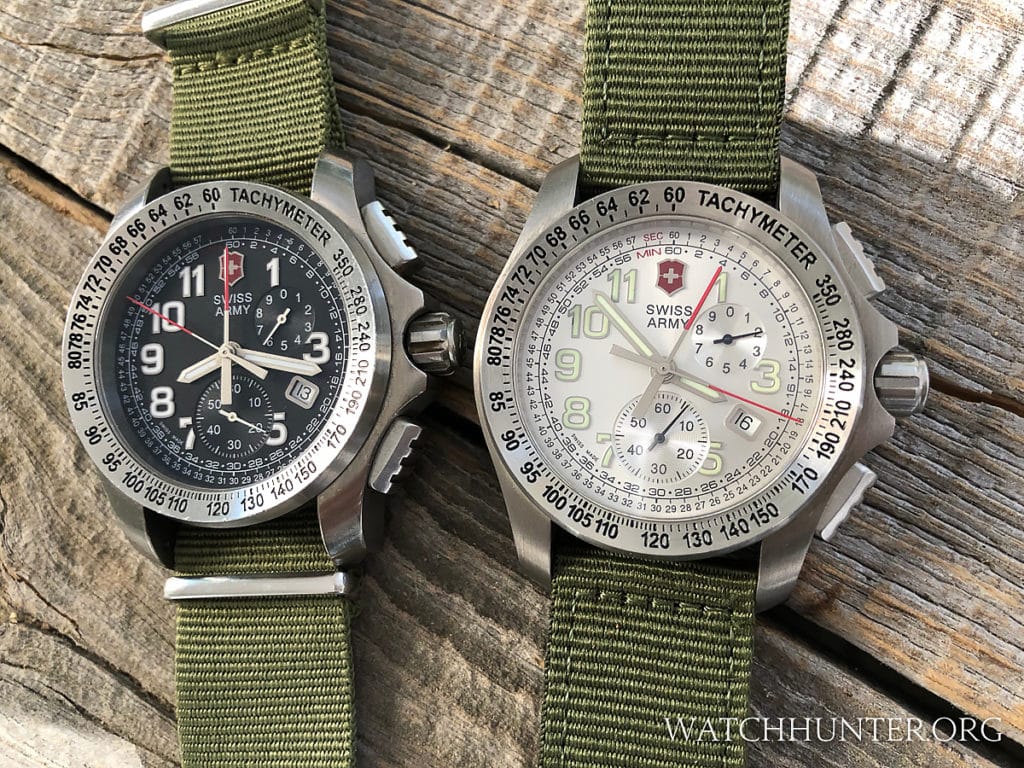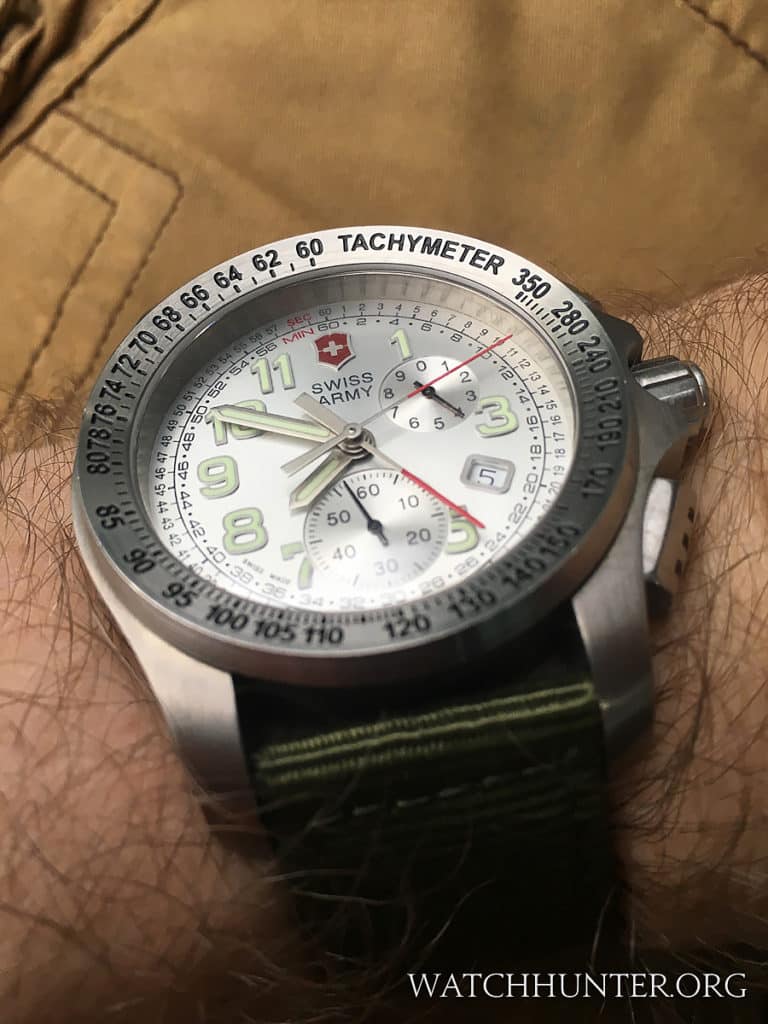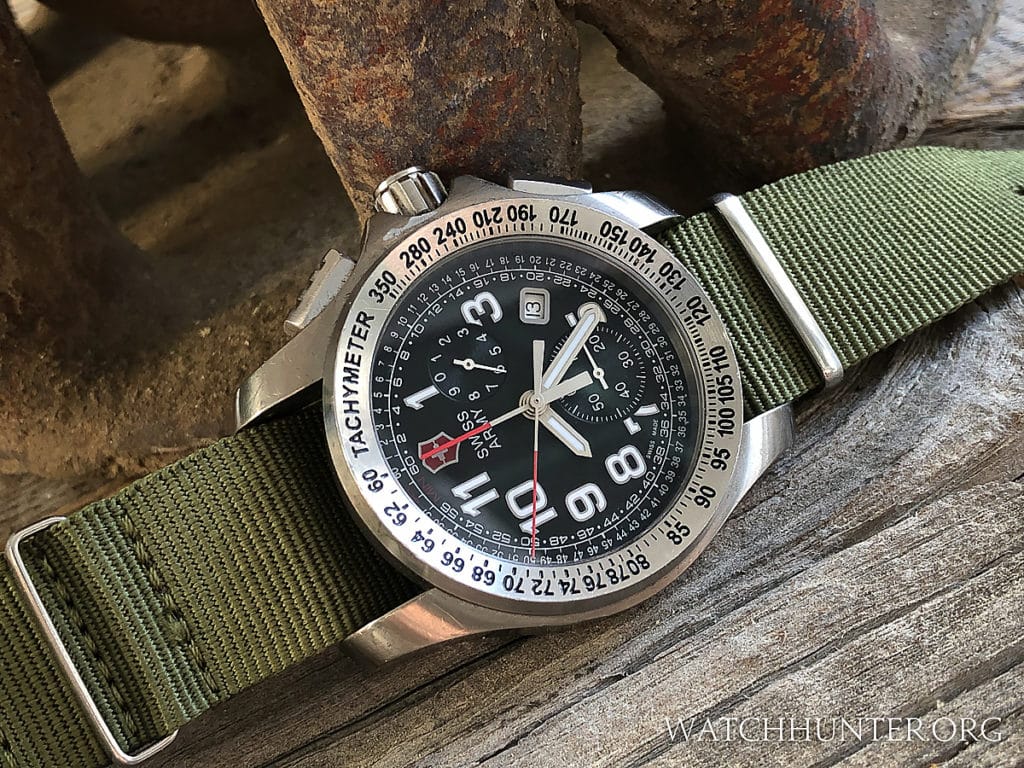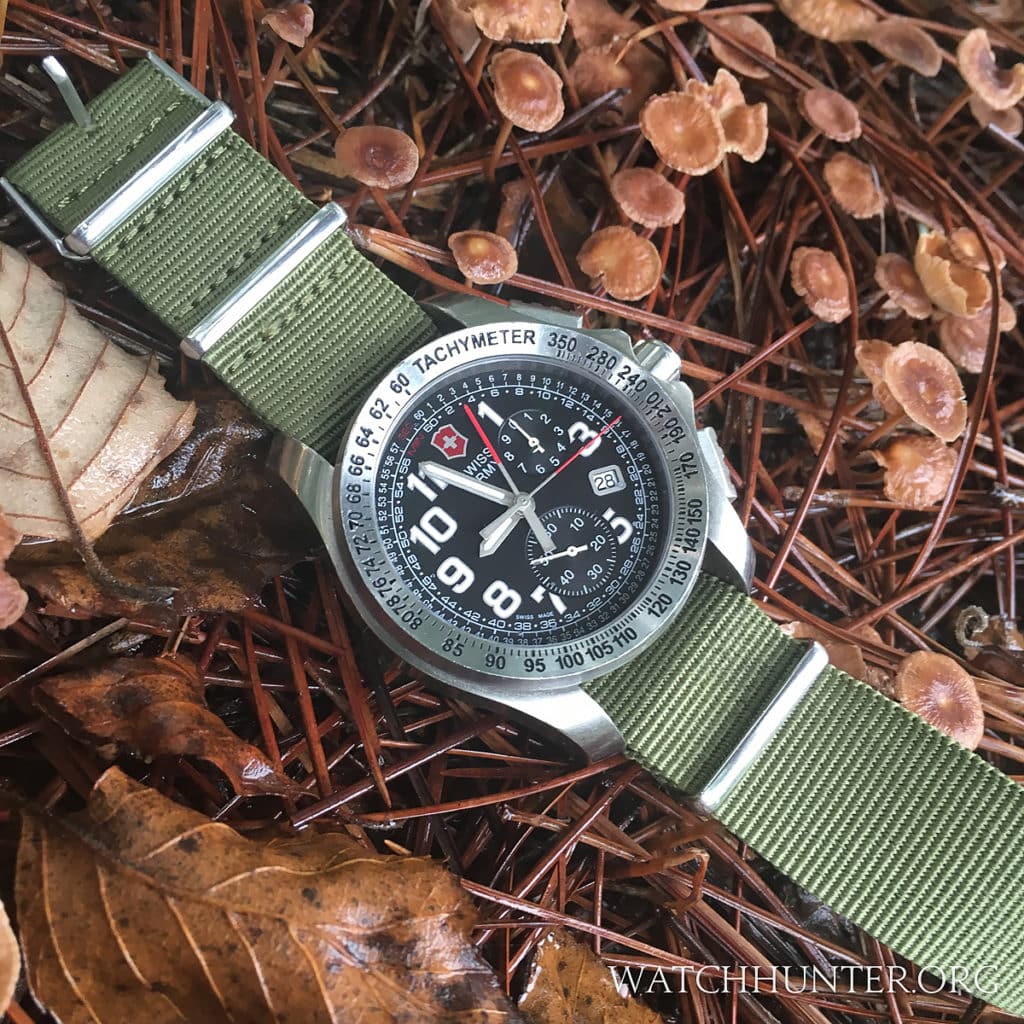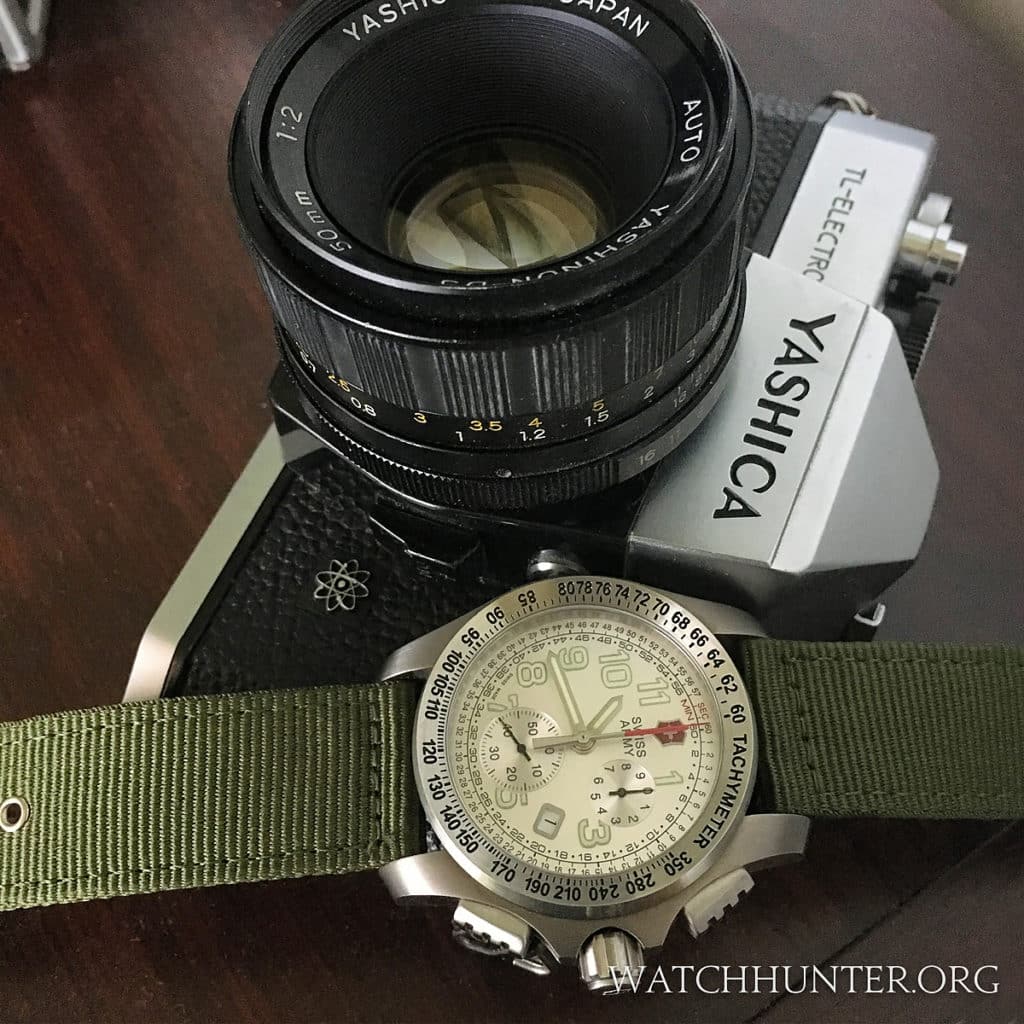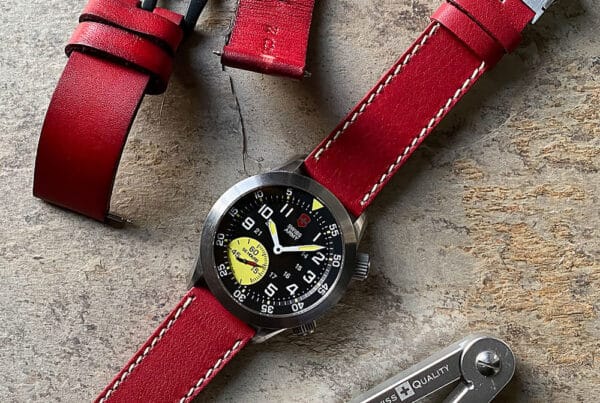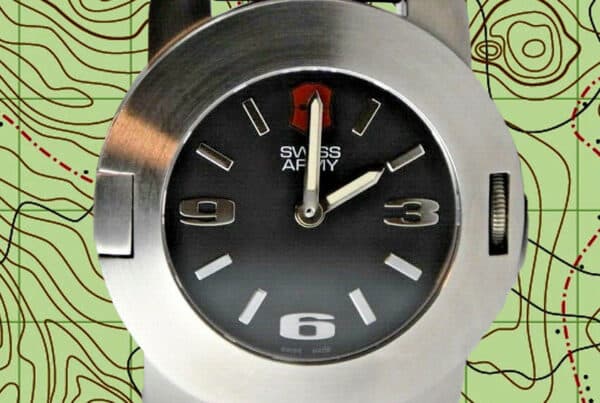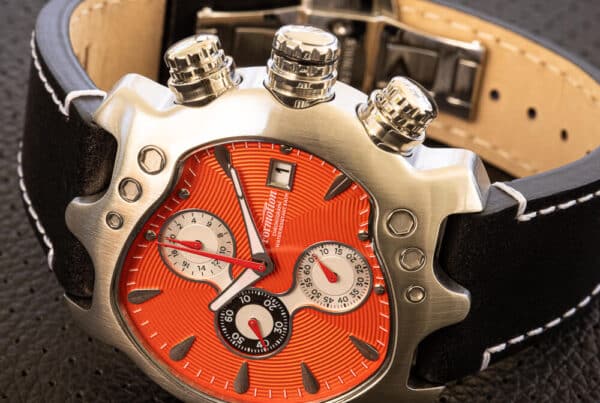Like the branches of the armed forces, different watches seem to be made specifically for air, sea or land. There are Flieger watches for pilots. There are dive watches for sailors. And for the grunts, there are so-called field watches. This is how military services have been organized for millennia. It all makes sense when you think about it. The Victorinox Swiss Army Ground Force Chronograph is definitely made for the last group, though it has some features that may be considered unique to a field watch.
Rugged Good Looks
The first detail one might notice about the Ground Force Chronograph is that it looks like it was made to play in the dirt. Check out the large integrated guards that protect the crown from being sheared off. The shape of the pushers reminds me of a soldier’s boots or tank tread. Even the signed, screw-in crown has a matching pattern. The shapes are very aggressive, tactile and look like it could survive some abuse.
These chunky features make working the chronograph buttons easy, even when your hands are gloved, wet or muddy. How do I know this? The Victorinox Swiss Army Ground Force is one of my favorite beater timepieces that I routinely deploy for yard work. It has never let me down and always completes the mission, even if that is only to spread mulch while trying to avoid an attacking horde of army ants. This watch looks good even if it gets dinged here and there.
As tough as it appears
Let’s look closer at the watch’s specs to infer what it can really handle. The Ground Force Chronograph has a unique quartz movement that I’ll detail later. Quartz movements are typically more robust than mechanical movements and can theoretically survive vibrations, knocks, and minor drops better than mechanical watch calibers, which can be more fragile. That statement is a gross over-simplification, but for now, just play along. Wink wink. Below is the watch being subjected to the dreaded “kibble test” where I buried it in dog food and let our two crazed Boston Terriers dig it out. The watch survived… sadly, the kibble did not. haha
Titanium Construction
The Swiss Army Ground Force Chronograph is not just another stainless steel field watch. It is made from titanium, which helps keep the weight down. Many models deployed with a titanium bracelet as standard equipment. Search for models with bracelets if you want to go “full metal jacket” on your adventures. Otherwise, you have a choice of OEM rubber straps with a blocky pattern or you may provide your own 22 mm wide strap of choice. The Swiss Army Ground Force Chrono is a bit of a strap monster so you can choose the style to match your mood. I like mine on olive drab green.
Like some other Swiss Army watches, the Ground Force Chrono’s lugs are drilled with 2 sets of holes. One is intended for a bespoke bracelet, and the other can be used for options like leather or nylon straps, which require more room to fit in the narrow space between the case and the spring bars. On a NATO strap, you barely notice that you are wearing a Ground Force because the titanium watch head is so light.
A Distinctive Case
The shape of the Swiss Army Ground Force Chronograph’s case is memorable with the aforementioned crown guards and pushers. The slab sides transition into short, horn-shaped lugs that turn down toward the wrist. The case width is 44 mm (not including the 5 mm oversized crown). The height of 13 mm is taller than one might expect from a quartz watch, but the watch has a husky build. A lug-to-lug distance of 52.5 mm is a great size for many wrists, but smaller wrists might prefer a strap over a bracelet. I personally feel like this watch wears smaller than the numbers on paper imply.
The Ground Force Chrono has a unique wedge-shaped bezel that tapers upward from the edge of the crystal. This unusual bezel can be susceptible to dings so finding an unmolested specimen is always a thrill. The black watch in this review is well used, and the silver one is in excellent condition (as reference points). Make sure to examine the bezel closely when buying one.
The interior of the case does not have a rehaute, and the brushed inner walls of the case can be seen from oblique angles. In the photo below you can see the details of the dial as ghostly apparitions. I feel like the inner walls help reflect light onto the dial, but I have no way to prove that… just something that I think I observed over time.
Why a Tachymeter?
A tachymeter scale is engraved and painted on the bezel. I find it fascinating that so many watches use a tachymeter as the default scale on their bezels. Tachymeters are often used in motorsports to determine the speed of an object over a given known distance such as a racetrack or mile marker. It is often less useful if you do not know the distance that an object is traveling.
Regardless, tachymeters are almost a given design choice because they add visual interest and imply the technical prowess of a watch. I suspect that some complications are used on watches for aesthetic appeal and not necessarily for real-world use. It could be argued that most watch complications may not really be needed in this cellphone era that we live in today.
That was not the case back in the mid-2000s when Swiss Army Ground Force watches were launched. The very first Ground Force watch had a splendid green dial (seen below), and the chronographs followed. Note the 3-link bracelets that were available for these watches. The titanium bracelets add less weight than you would suspect given the heavy-duty appearance. The center links appear to be a more muted color than the outer links so there might be a difference in surface treatments.
Instead of a tachymeter, perhaps, it would have been more appropriate to add a telemeter scale to the Ground Force Chrono. Telemeter watches were traditionally employed to determine artillery barrage distances using the speed-of-sound as a variable. Swiss Army used telemeter bezels for some of their Infantry Vintage Chronographs.
60/60 Dials
Swiss Army Ground Force Chronos have two separate 0-60 scales on the outer fringes of the dial. Every minute and second is labeled for accurate time-reading with zero guesswork. It does not get any easier to use a chrono than this. The shorter, thicker hand points directly to the minute’s track, and the longer, thinner hand points directly to the second’s track. Simply combine the two to read elapsed time. The image below reads 4 minutes and 18 seconds.
This type of watch is called a “central minutes chronograph” and is vastly different than chronographs that rely on small subdials to record elapsed minutes. Several famous pilot watches of yesteryear used a central minutes chronograph with the legendary Lemania 5100 movement, long since discontinued. The Swiss Army Ground Force uses a quartz ETA 251.262 movement.
Instead of a measly 30-minute subdial like other quartz watches, the owner of a Ground Force Chrono is treated to a full-sized, 60-minute timer, which is a big advantage. More time… easier to use… looks cooler. It’s a solid win for chronograph fans. For additional information, please check out my article on Swiss Army’s 60/60 chronographs.
How to Time an Event
To time an event, the user simply starts the chronograph with the top pusher. The central second’s hand starts ticking at this point. As the second’s hand passes the 60-second mark at 12:00, the central minute’s hand moves “one tick” indicating that a minute has elapsed. It is very easy to read the elapsed minutes and seconds at a glance on a central minute chronograph. Activate the top pusher again to stop the chronograph. At this point, the 1/10th of a second indicator will activate. Reset the chronograph with the bottom pusher, which will cause both minutes and seconds hands to sweep back to the 12;00 position. The subdial at 6:00 is a small seconds dial that constantly ticks to indicate the watch is functioning.
Variations
There were three dial variants for the Swiss Army Ground Force Chronos including a beautiful sunburst silver dial, a standard black dial, and a flashier red dial. Each has a unique look and, I honestly think one could happily collect all three.
These watches offer a different way to measure elapsed time in a package that looks robust enough to survive a battle. If you don’t want to look like the rest of the guys at the local watch meet-up, grab a Swiss Army Ground Force Chrono. Be prepared to demonstrate the central minutes chronograph. It’s definitely a party trick if watch nerds are present. Prices vary for a nice specimen, but you will likely pay more for a bracelet version, which is always the safe bet.


